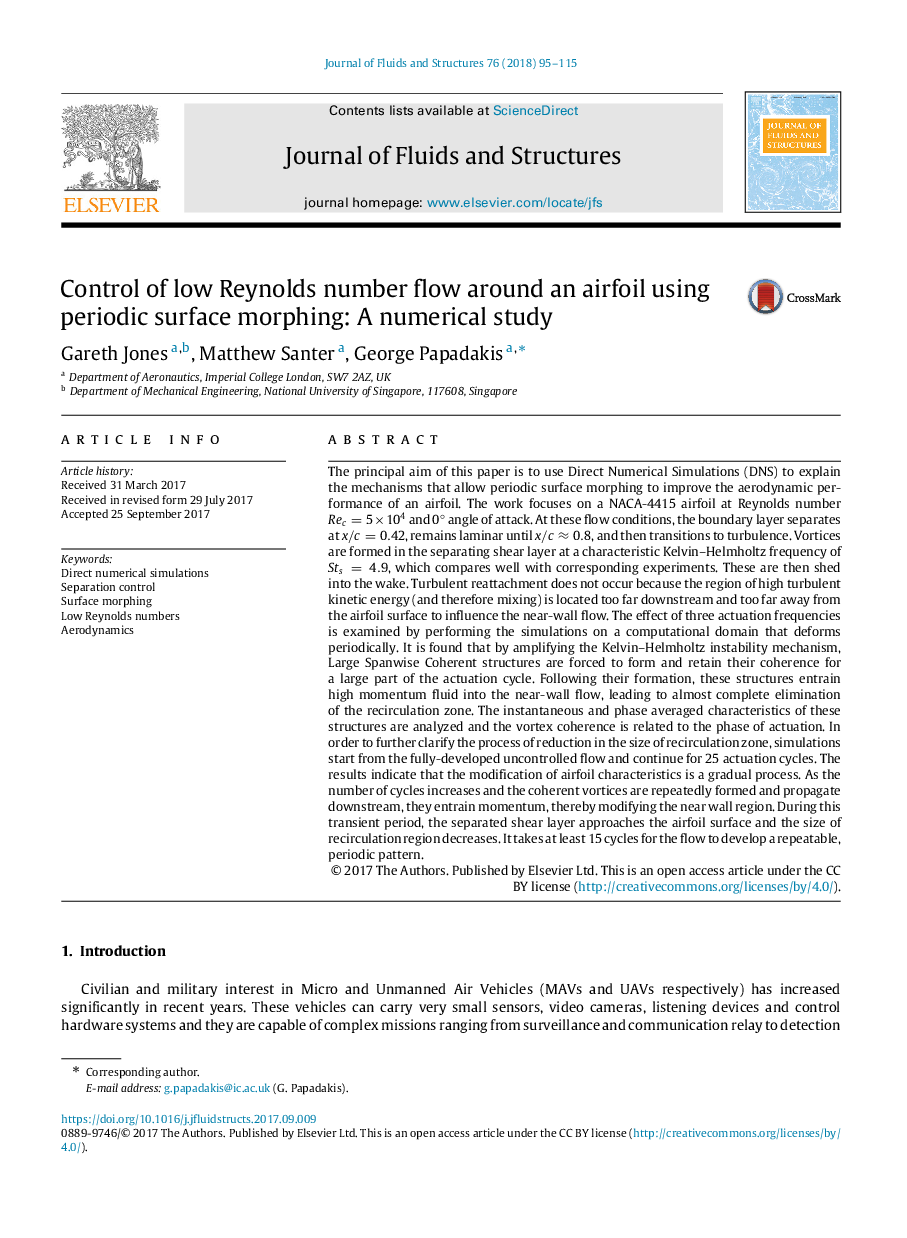| کد مقاله | کد نشریه | سال انتشار | مقاله انگلیسی | نسخه تمام متن |
|---|---|---|---|---|
| 7175832 | 1466571 | 2018 | 21 صفحه PDF | دانلود رایگان |
عنوان انگلیسی مقاله ISI
Control of low Reynolds number flow around an airfoil using periodic surface morphing: A numerical study
دانلود مقاله + سفارش ترجمه
دانلود مقاله ISI انگلیسی
رایگان برای ایرانیان
کلمات کلیدی
موضوعات مرتبط
مهندسی و علوم پایه
سایر رشته های مهندسی
مهندسی مکانیک
پیش نمایش صفحه اول مقاله

چکیده انگلیسی
The principal aim of this paper is to use Direct Numerical Simulations (DNS) to explain the mechanisms that allow periodic surface morphing to improve the aerodynamic performance of an airfoil. The work focuses on a NACA-4415 airfoil at Reynolds number Rec=5Ã104 and 0° angle of attack. At these flow conditions, the boundary layer separates at xâc=0.42, remains laminar until xâcâ0.8, and then transitions to turbulence. Vortices are formed in the separating shear layer at a characteristic Kelvin-Helmholtz frequency of Sts=4.9, which compares well with corresponding experiments. These are then shed into the wake. Turbulent reattachment does not occur because the region of high turbulent kinetic energy (and therefore mixing) is located too far downstream and too far away from the airfoil surface to influence the near-wall flow. The effect of three actuation frequencies is examined by performing the simulations on a computational domain that deforms periodically. It is found that by amplifying the Kelvin-Helmholtz instability mechanism, Large Spanwise Coherent structures are forced to form and retain their coherence for a large part of the actuation cycle. Following their formation, these structures entrain high momentum fluid into the near-wall flow, leading to almost complete elimination of the recirculation zone. The instantaneous and phase averaged characteristics of these structures are analyzed and the vortex coherence is related to the phase of actuation. In order to further clarify the process of reduction in the size of recirculation zone, simulations start from the fully-developed uncontrolled flow and continue for 25 actuation cycles. The results indicate that the modification of airfoil characteristics is a gradual process. As the number of cycles increases and the coherent vortices are repeatedly formed and propagate downstream, they entrain momentum, thereby modifying the near wall region. During this transient period, the separated shear layer approaches the airfoil surface and the size of recirculation region decreases. It takes at least 15 cycles for the flow to develop a repeatable, periodic pattern.
ناشر
Database: Elsevier - ScienceDirect (ساینس دایرکت)
Journal: Journal of Fluids and Structures - Volume 76, January 2018, Pages 95-115
Journal: Journal of Fluids and Structures - Volume 76, January 2018, Pages 95-115
نویسندگان
Gareth Jones, Matthew Santer, George Papadakis,